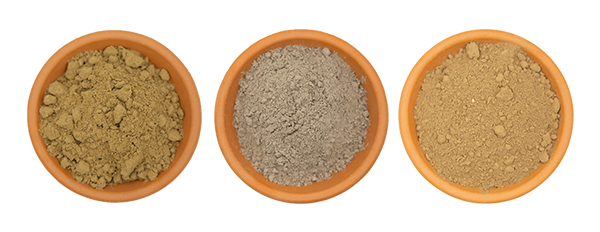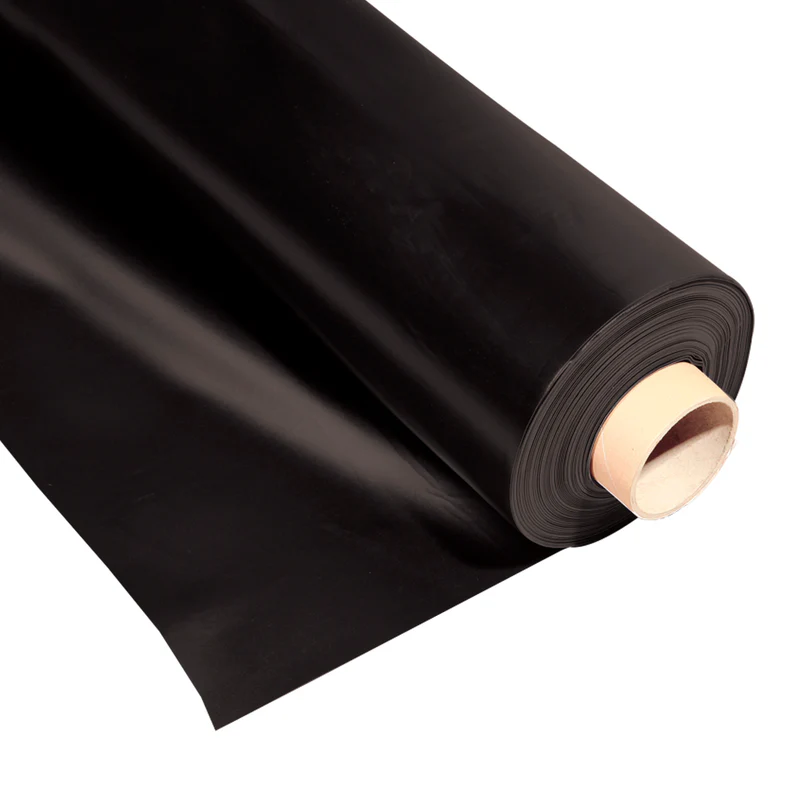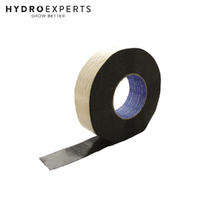PVC vs EPDM Pond Liner: Which is the Best Pond Liner for Your Pond?
By Hydro Experts | 24 July 2025

Having a backyard pond is always a nice addition to the home. Whether it's for graceful koi, vibrant water lilies, or just the calming sound of trickling water, a pond can truly transform your outdoor space. But before you grab your shovel, there's a super important decision you need to make, and that's choosing the right pond liner.
The pond liner is the heart of your pond. It's the waterproof barrier that holds all the water in. Picking the right one means a healthy, happy pond for years to come, while a bad choice can lead to endless headaches and leaks. Therefore, in this guide, we'll break down two main types of pond liner, PVC and EPDM, to help you find the best fit for your dream pond.
What is a Pond Liner?
A pond liner is a waterproof sheet used to hold water in a pond. It acts as a barrier between the soil and the pond water, preventing water from leaking into the ground. Some of the popular brands that offer the best pond liners are PondMAX and OASE.
Pond liners are available in various materials, including rubber, plastic, and flexible fabrics. The two most common types used in backyard ponds are PVC (Polyvinyl Chloride) and EPDM (Ethylene Propylene Diene Monomer).
Why Do You Need a Pond Liner?
1 Prevents Water Loss
Imagine filling up a bucket with a hole in it; well, the water would surely leak. Without a liner, your pond would be just like that leaky bucket.
A good pond liner, especially from brands like PondMAX and OASE, creates a strong barrier that stops water from leaking into the soil. This saves you from constantly topping up your pond and wasting water.
2 Maintains Water Quality
Your pond's water needs to stay clean and balanced for fish and plants to grow. That's where, in case water leaks out, fresh water has to be added constantly. This can be pretty tiring, especially in the long run.
Additionally, constantly adding new water all the time can change the chemical balance and temperature of your pond, which can be bad for sensitive aquatic life. That's where a liner helps keep everything stable.
3 Protects the Ecosystem
Ponds are tiny ecosystems, home to fish, plants, and tiny helpful organisms. A stable environment is important for these living things to flourish.
A pond liner creates a distinct space where your pond's ecosystem can grow without being disturbed by the surrounding soil and its elements. This is sure to help your pond's ecosystem stay constant and enable growth for aquatic life.
4 Simplifies Maintenance
A well-installed liner means fewer worries about leaks and less time spent on major repairs. This leaves you more time to enjoy your pond.
When your pond holds water properly, cleaning, filtering, and caring for your aquatic friends become much easier tasks.
5 Shape Your Pond
Beyond just holding water, liners allow you to create ponds of almost any shape and size you can imagine. They are flexible and can be molded to your design.
Whether you want a simple round pond or a multi-level water feature with waterfalls, the right liner lets you bring your unique vision to life.
Overview of PVC Pond Liners
PVC stands for Polyvinyl Chloride. It's a type of plastic that is widely used in many everyday items, from pipes to window frames. For ponds, it's made into flexible sheets.
PVC pond liners are a popular choice, especially for people starting their first pond, because they are generally the most affordable option. They are also quite flexible, which makes them easy to work with when you're shaping your pond.
Pros
- Budget-Friendly: PVC liners are usually cheaper to buy upfront, making them a good choice if you're on a tight budget.
- Easy to Shape: They are quite flexible, which means you can easily fold and mould them to fit the curves and contours of your pond design. This can make DIY installation a bit simpler for smaller ponds.
- Widely Available: You'll find PVC liners easily at most garden and pond supply stores.
Cons
- Less Durable: PVC can become stiff and brittle over time, especially when exposed to direct sunlight and extreme temperatures. This makes it tear and puncture.
- Shorter Lifespan: PVC liners typically last about 10 to 15 years. You should replace it sooner than other options.
- Potential for Leaching: Some older or lower-quality PVC liners might slowly release certain chemicals into the water. While many modern PVC liners are designed to be safer, it's a point of concern for some pond owners, especially those with sensitive fish.
Overview of EPDM Pond Liners
EPDM stands for Ethylene Propylene Diene Monomer. You can think of it as a type of synthetic (man-made) rubber. It's the same material often used for roofing on flat buildings.
EPDM pond liners are considered the premium choice for pond builders. They are known for being incredibly tough and long-lasting, often lasting for many decades. They stay flexible even in very cold or hot weather, making them ideal for almost any climate.
Pros
- Extremely Durable: EPDM is super tough against punctures, tears, and cracking. It can handle rough use and is very resistant to damage from UV rays (sunlight).
- Very Long Lifespan: These liners can easily last 20 to 30 years, and often even longer. Many come with very long warranties, which tells you how confident manufacturers are in their product.
- Excellent Flexibility: Even in freezing temperatures, EPDM remains flexible, making it easier to install and less likely to crack than PVC in cold weather.
Cons
- Higher Upfront Cost: EPDM liners are more expensive to buy than PVC liners. This can be a significant factor if you have a tight budget.
- Heavier: EPDM is a denser material, so a large liner can be quite heavy and might require more than one person to move and position during installation.
- Less Resistant to Sharp Objects: While very tough, it's still possible to puncture EPDM with very sharp objects like broken glass or jagged rocks if not careful during installation. (This is a small point, as it's far superior to PVC in this regard.)
PVC vs EPDM Pond Liner
For in-depth detail, here is a side-by-side comparison of PVC and EPDM pond liner:
| Feature | PVC | EPDM |
|---|---|---|
| Material | Plastic (Polyvinyl Chloride) | Synthetic Rubber (Ethylene Propylene Diene Monomer) |
| Cost | Lower upfront cost | Higher upfront cost |
| Durability | Moderate - can become brittle | Excellent - highly resistant to tears and punctures |
| Lifespan | 10-15 years | 20-30+ years |
| Flexibility | Good, but stiffens in cold | Excellent, remains flexible in all temperatures |
| UV Resistance | Moderate - can degrade over time | Excellent - highly UV resistant |
| Safety for Fish | Generally safe, but lower quality may leach | Completely safe, non-toxic |
| Installation | Easier due to lighter weight | Heavier, may require more help |
| Best For | Small ponds, temporary features, tight budgets | Large ponds, permanent features, koi ponds |
Which Pond Liner is Best for You?
1. Budget Considerations
If you're building a small, simple water feature or you're on a very tight budget, PVC might be a suitable option. A point to note is that it might not last as long as you want it.
2. Pond Size and Purpose
If you're planning a larger pond, especially one with valuable fish like koi, or if you want your pond to last for many, many years with minimal fuss, EPDM is definitely the superior choice. Its durability and safety for aquatic life make it worth the extra investment.
3. Climate Conditions
If you live somewhere with harsh winters or intense sun, EPDM's resistance to temperature changes and UV rays makes it a much more reliable option.
4. Future Plans
If you might expand your pond or want a permanent backyard feature, choosing EPDM now can save you a lot of hassle and money on replacements down the road.
Expert Tips for Installing Pond Liners
1. Clear the Area
Before laying the liner, remove any sharp rocks, roots, sticks, or debris from the pond hole. Even a small, sharp object can eventually puncture the liner. Smooth out the bottom and sides as much as possible.
2. Use Underlayment
This is a soft, protective fabric that goes directly under your pond liner. Think of it as a soft blanket. It adds an extra layer of protection against sharp objects from below and helps prevent punctures. It's highly recommended for both PVC and EPDM.
3. Measure Carefully
Measure the length, width, and deepest point of your pond. Add extra for the edges to fold over and secure. It's always better to have too much liner than not enough! A common trick is to add twice the maximum depth to both the length and width of your pond.
4. Work on a Warm Day
Both PVC and EPDM are more flexible and easier to work with when they are warm. This makes unfolding and shaping them much simpler.
Conclusion: PVC or EPDM
When it comes to PVC vs EPDM pond liners, there's a clear winner for most long-term pond projects, which is EPDM. While it costs more upfront, its superior durability, long lifespan, and safety for aquatic life make it a smart investment that saves you time, money, and headaches in the long run.
However, for small, temporary water features or if you're on a very strict budget, PVC can still get the job done. Just be aware of the limitations it has.
Choosing the right pond liner is a big step towards creating the beautiful and thriving water feature you've always wanted. Carefully note down the pros and cons, consider your pond's purpose, and choose the liner that best suits your needs for years of enjoyment.
FAQs
Yes! EPDM pond liners are made from an inert, non-toxic material. This means they will not release any harmful chemicals into your pond water, making them completely safe for all types of fish, plants, and other aquatic life.
While it is possible, it's generally not recommended for very large ponds. PVC is more prone to punctures and degradation over time, especially in exposed areas. For large ponds, the cost and effort of replacing a leaking PVC liner can quickly outweigh its initial lower price. EPDM is much better suited for larger, long-term installations.
The lifespan varies greatly by material. PVC pond liners typically last between 10 to 15 years. EPDM pond liners are much more durable and often last 20 to 30 years or even longer, often coming with a 20-year manufacturer's warranty.
For smaller and simpler pond designs, yes, many people successfully install pond liners themselves. However, for larger ponds, complex shapes, or very heavy EPDM liners, it can be a challenging job. You might need help from friends or consider hiring a professional for an easier and more secure installation.
Yes, it is highly recommended to use a pond underlayment, regardless of whether you choose PVC or EPDM. Underlayment provides a crucial protective layer between your liner and the ground. It helps prevent punctures from sharp rocks, roots, or other debris, significantly extending the life of your pond liner and preventing costly leaks.












